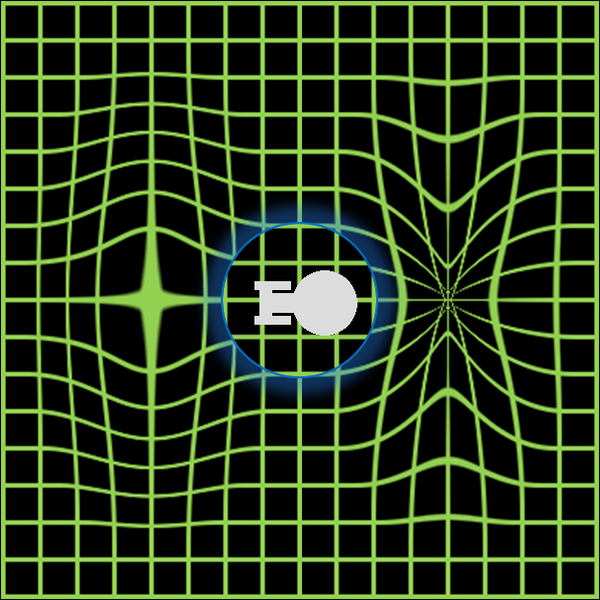
The metric derived by Alcubierre was mathematically motivated by cosmological inflation. The original "warp-drive" spacetime metric can be written in (t,x,y,z) coordinates as:
ds^2 = -c dt^2 + [dx-v_s(t)f(r_s)dt]^2 +dy^2 +dz^2
It uses the curve (world line) x=x_s(t),y=0,z=0 where x_s expresses the x-coordinate position of the moving spaceship frame.
The radius r_s=[(x-x_s(t))^2+y^2+z^2] is the euclidean distance from the curve. Furthermore, c is the speed of light and v_s(t) is equivalent to dx_s/dt, the velocity associated with the curve.
The shaping function f(r_s) is any smooth function that satisfies f(0)=1 and decreases from the origin, vanishing at r_s>R for some point R.
The driving phenomenon behind the apparently arbitrary velocity (including v_s>c) could be (and was) postulated to be the York extrinsic time, \Theta, defined as:
\Theta=\frac{v_s}{c}\frac{x_s}{r_s}\frac{df}{dr_s}
It provides for the contraction of space in front and expansion in the back of the warp bubble. The idea can be seen in some way as an applied extension of the hypothesis that the early universe also saw a rapid inflationary expansion that possibly exceeded the speed of light for some time. However, according to research, it appears that the York time behaviour is merely a side effect of another underlying mechanism. The problem that led to the assumption that York time is only one part in the larger picture is the unusual symmetry in the required energy density. Using the Einstein field equations, the stress energy tensor T^{\mu\nu} can be derived from the Alcubierre metric, resulting in the necessary energy density:
The energy-density distribution around the x-axis derived from the EFE
T^{00}=-\left(\frac{c^4}{8\pi G}\right)\left[\frac{v_s^2(t)\rho^2}{4r_s^2c^2}\right]\left(\frac{df}{dr_s}\right)^2
where G is the gravitational constant and \rho=\sqrt{y^2+z^2}.